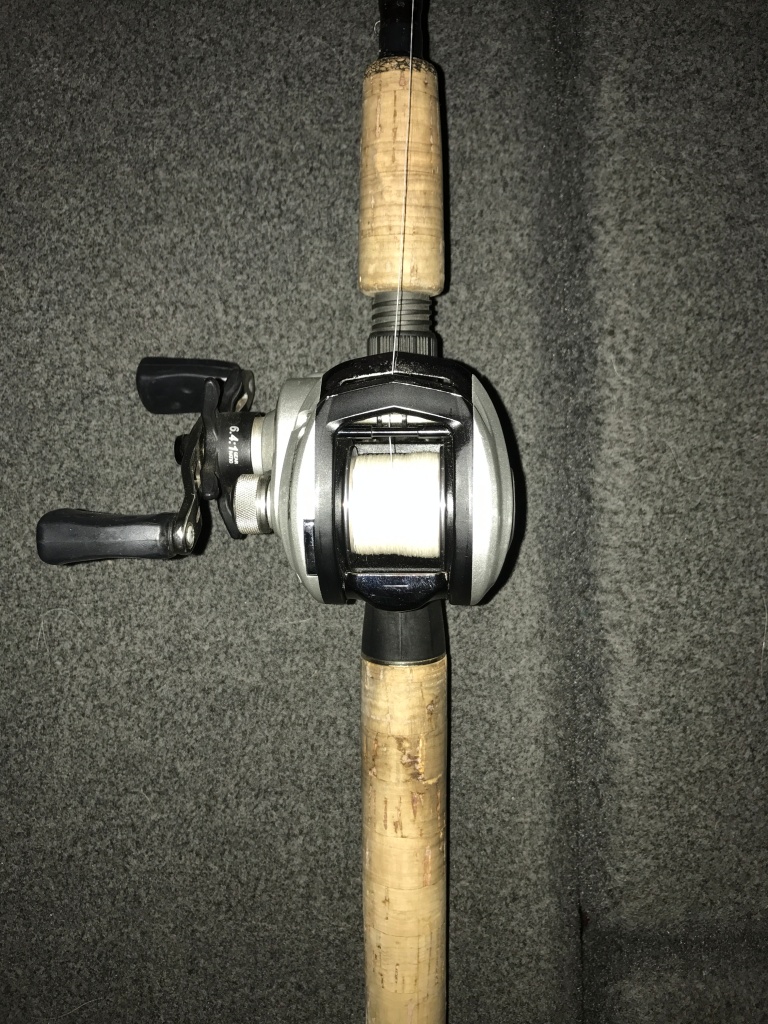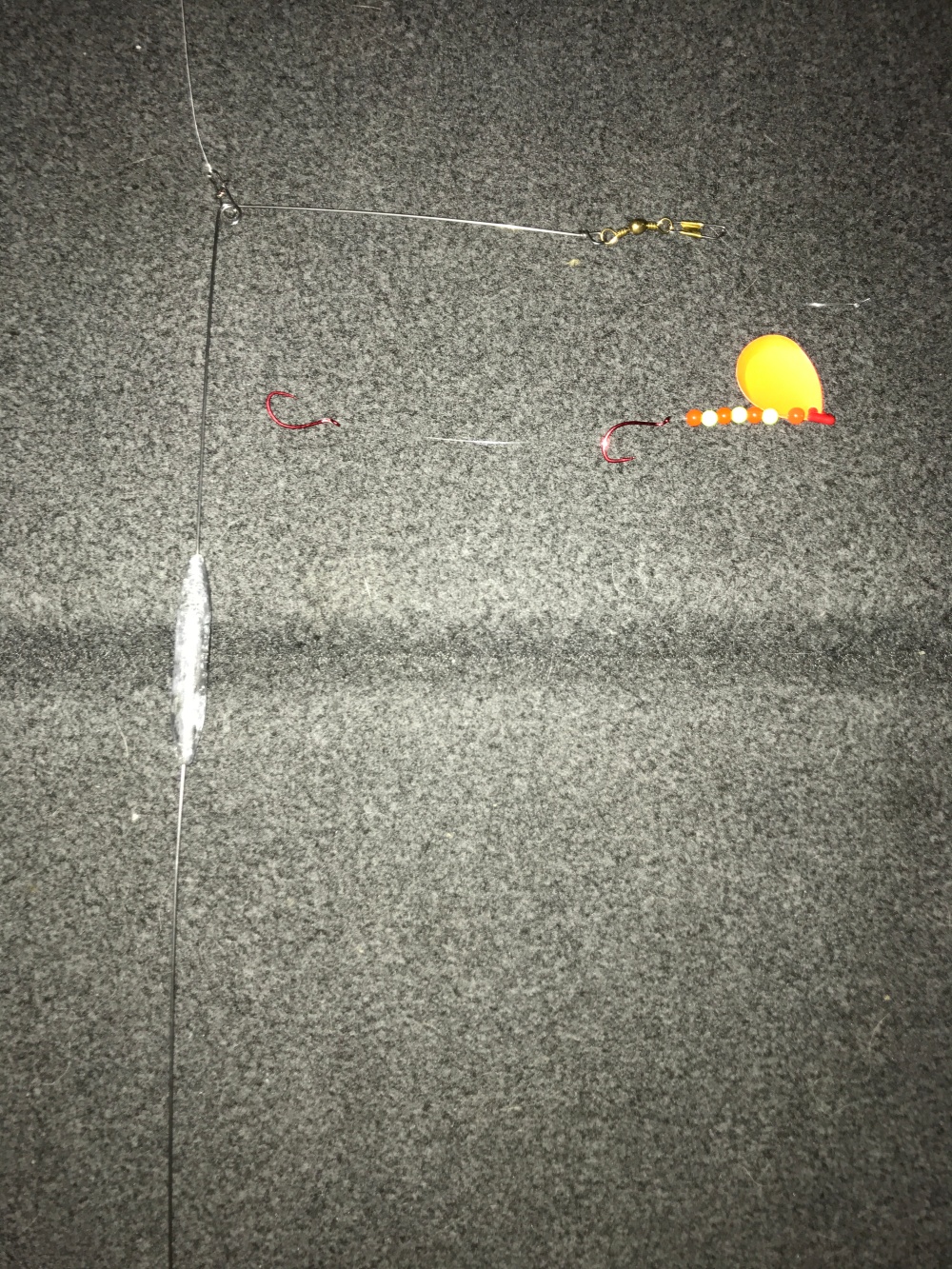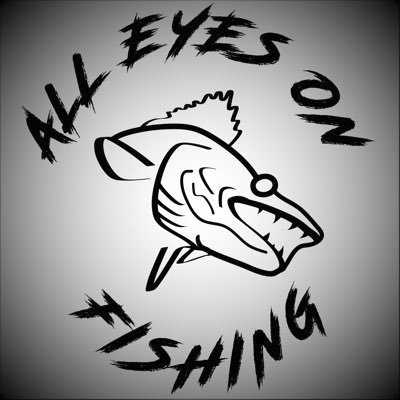It’s that time of year when the weather is warm and the fishing is on fire! I am talking June is the month of BBQ’s, baseball and bottom bouncers. That’s right, bottom bouncers! Let’s talk early summer tactics for aggressive fish, which can be used for the rest of the summer. I am constantly asked when, where and how to use bottom bouncers. Many look at those hunks of lead attached to the “L” shaped wires and wonder what am I supposed to do with that? Catch fish and lots of them! Bottom bouncers are an inexpensive highly effective way to fish for active early summer, summer and early fall fish. I will take you step by step on what equipment you need to fish bouncer, how to correctly present bouncers and what presentations can be used with bouncers so you can catch more fish.
Let’s get started with the proper equipment. The bouncer itself is an ordinary no thrills piece of equipment. Generally cheap is fine and most often I prefer the cheaper bouncers. I like the bouncers with a fully enclosed loop at the top so I can use a quick clip to change out bouncers quickly if I need to adjust the amount of weight I am using. Northland makes a bouncer and the top where your main line connects is shaped like the letter “R”, which allows a quick clip to slide down the bouncer and possibly come off. I haven’t had much luck with a direct tie to those types of bouncers either. At some point the knot slides down the wire and you have issues. Bouncers come with snap swivels already attached and those are what you use to attach the line going to your presentation. A general rule of thumb for how much weight to use is one (1) ounce for every ten (10) feet of water depth. If you are fishing a little deeper than ten feet and its calm conditions, you can more than likely use a one ounce bouncer and keep good contact with the bottom. It’s important to be able to feel the bottom so you can have proper line management.
Rod and reel selection are as important in this process as any other. You can play around with rod length once you become proficient at bottom bouncing. I prefer a 6 ½ to 7 foot medium action rod that can accommodate a bait casting reel. Many rod manufactures build rods specifically for bottom bouncing and take out any guess work when selecting a rod. The key thing to remember when standing in front of all those rods, is you need a rod that is stout enough (back bone) to handle a 3 or 4 ounce bouncer but is sensitive enough to see and feel the bottom. When picking a reel you have a few different options. I like bait casting style reels with some sort of flip-in switch. Abu Garcia makes a good reel for this now and Shimano has made several reels in the past specifically for this type of application. I like the flip-in switch because I don’t have to crank the reel to engage it once I let line out and I can operate the reel with one hand. As you bottom bounce more you will get into situations where you are constantly adjusting your depth so you can stay in close proximity to the bottom. Spread this out amongst four rods and you are running around like crazy. A spinning rod and reel combination will work for this but it is not optimal and not suggested. If you have trolling rods with line counter reels, those can be used for this and can be very effective. The line counter reels are handy when fishing with people who might not really get the concept of bottom bouncers or with kids. A general rule of thumb I have found is, if you use an appropriate size bottom bouncer on a trolling rod with a line counter reel and you are traveling approximately 1 mph to 1.4 mph you can set your line counters 10 feet more than the depth you are fishing and the bouncers will be just off bottom. Many factors play into this, such as wind and if you use different lines, but for the most part that is a good trick to know so others who you take fishing can set up their bouncers on their own without dragging them laying down on the bottom. The last piece of the equipment puzzle is line selection. This is personal preference depending on what you like and how much you want to feel through your line. I prefer 14 lb Berkley crystal fire line as my main line. My tournament partner prefers 10 lb monofilament as his main line. The goal is to run your line angle at approximately a 45 degree angle form the tip of your rod to the water. Fire line grabs less water and cuts through the water better. I also like the sensitivity of the fire line and I think it makes it easier to feel and see your bouncer ticking the bottom. My tournament partner likes the way mono feels and believes it provides a little bit of a shock absorber when the fish hits so you lose less fish. Play with it and see what you prefer. I will pass this along, I use 14 lb so I ensure I don’t lose my bouncer when snagged. I tie my presentations with 12 lb P-Line and that should break before my main line, which allows me to keep the most expensive part of my rig.

Now that you are all set up with equipment let’s talk presentation. Bouncers can be used to present so many different things. It is a weight system that allows you to be in close proximity to the bottom and to avoid most snags. I typically use bouncers to run some type of spinner rig/crawler harness or slow death. You can buy spinners already tied and are ready for use out of the package. Learning to tie your own rigs is an easy cost effective way to create your own color combinations and it gives you something to do all winter. I prefer the length of my spinner rigs to start at approximately 4 ft and to get longer or shorter depending on what structure I am fishing. You lose some of that flexibility when you purchase pre-tied store bought spinner rigs. I ALWAYS use a quick change clevis (the small plastic piece that holds the spinner blade on); because like trolling crank baits, I am constantly changing colors to find the right flash the fish want. A two hook harness for most applications is optimal and if you are fishing open water you can always tie on a third hook. Here is a little trick I live by and I have seen it make all the difference in the world. I use half a night crawler on my harnesses. I think a full night crawler is too much. A full crawler allows the fish to bite off the back and miss the hooks all together and I think it’s too much length for most fish. I know you Great Lakes guys will disagree, but I have used half a crawler there as well and I believe we caught more fish on the rods with half crawlers. I also like the half worm is oozing worm smell into the water from the torn end and when you are catching a lot of fish you can double the amount of bait you have with you. It’s all personal preference and you can play with it to see what fits you best. The last bit of insight I will share with you is how to fish bouncers. You most often do NOT drag bouncers on the bottom. South Dakota guys do from time to time to attract fish, but in general you drop the bouncer down till you see it hit bottom and crank it up two or three cranks to erect the bouncer into its intended standing position. The intended speed for this type of presentation can vary, but in general if you are using spinners or slow death, 0.8 to 1.5 is optimal. You should see or feel the bottom tick the bouncer every once in a while. For the most part that bouncer is keeping your presentation just off the bottom and right in the fishes face. If you drop back your rod tip and see your line go slack from the bouncer falling to the bottom, then you are running it perfect.

There is much more to cover when it comes to presentations, but we will save that for another article. This should help any reader get started fishing bouncers and it is bouncer season. Remember the correct equipment makes all the difference between success and a tangled mess. Start out with one rod rigged properly and expand to more if you like to fish this way. Berkley makes a new fire line that is color coated like lead core line and it could be perfect for something like this. Boat control is key when using this to fish edges and this method is highly effective. Keep it simple and you will add another very effective tool for catching fish to your boat. Bottom bouncers will definitely help you fish your next level!
 By Josh Sheldon/All Eyes On Fishing: Who are these guys? What do they know about fishing? Why should I go any further? All are great questions and questions I ask myself when I read articles and watch any sort of outdoor media. From left to right..Brad Qualley, Josh Sheldon and Mitch Petersen. We are three hardworking guys that love family and the outdoors. We all come from different backgrounds and parts of the country and we became friends almost 20 years ago fishing local Colorado walleye tournaments. All Eyes On Fishing is our way of giving back to the fishing community and a way to share what we have learned from a life time of fishing. We are successful tournament anglers and I promise the information contained in this blog and our YouTube vlog will be one of your best sources of information and entertainment. We are like all of you, fishing on a budget. We will discuss products because they work and using these products will greatly improve how you catch fish. We will focus on western waters and techniques, because fishing the west is unique in many ways and the reservoirs we visit are unique and challenging. I guarantee the information found on All Eyes On Fishing will make you a better fisherman and give you a laugh while you read/watch! https://alleyesonfishing.com/
By Josh Sheldon/All Eyes On Fishing: Who are these guys? What do they know about fishing? Why should I go any further? All are great questions and questions I ask myself when I read articles and watch any sort of outdoor media. From left to right..Brad Qualley, Josh Sheldon and Mitch Petersen. We are three hardworking guys that love family and the outdoors. We all come from different backgrounds and parts of the country and we became friends almost 20 years ago fishing local Colorado walleye tournaments. All Eyes On Fishing is our way of giving back to the fishing community and a way to share what we have learned from a life time of fishing. We are successful tournament anglers and I promise the information contained in this blog and our YouTube vlog will be one of your best sources of information and entertainment. We are like all of you, fishing on a budget. We will discuss products because they work and using these products will greatly improve how you catch fish. We will focus on western waters and techniques, because fishing the west is unique in many ways and the reservoirs we visit are unique and challenging. I guarantee the information found on All Eyes On Fishing will make you a better fisherman and give you a laugh while you read/watch! https://alleyesonfishing.com/
